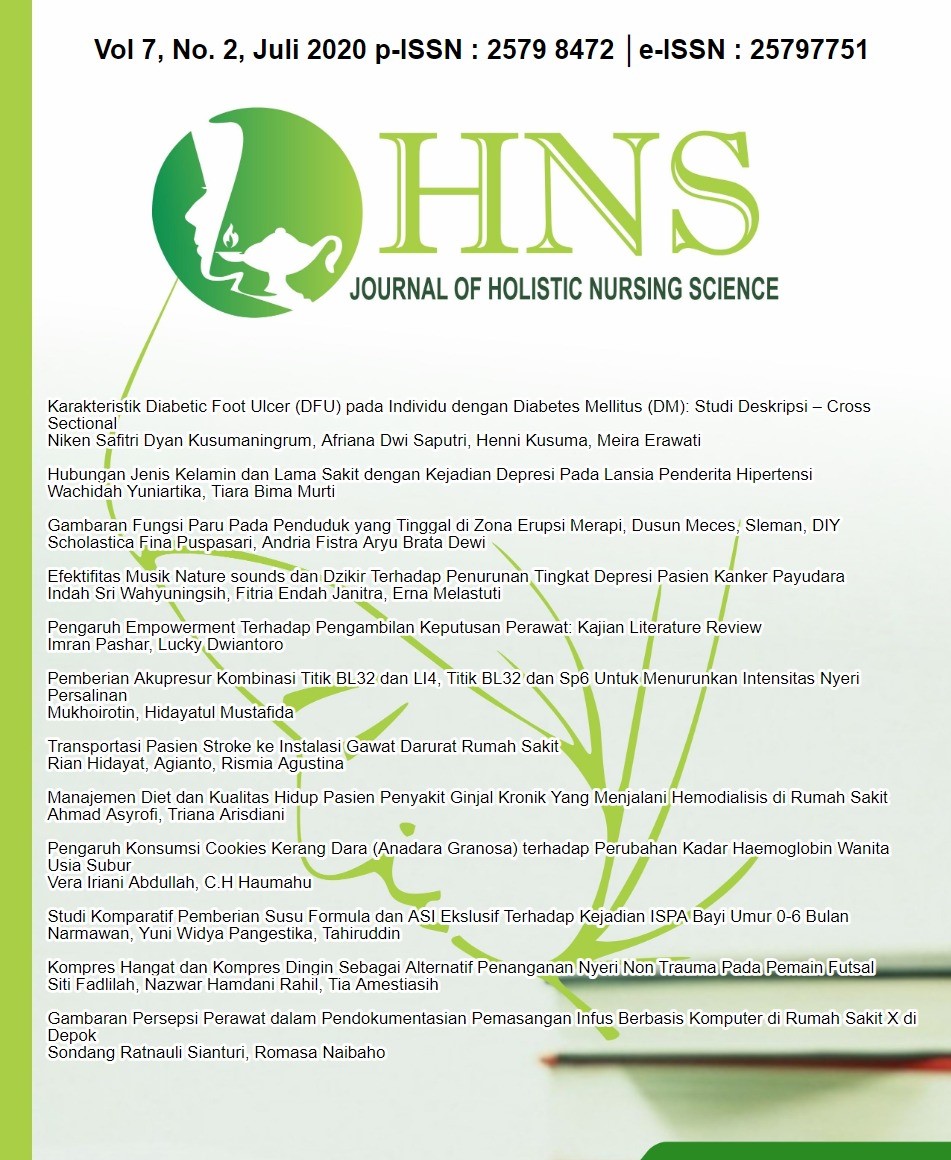Gambaran Fungsi Paru Pada Penduduk yang Tinggal di Zona Erupsi Merapi, Dusun Meces, Sleman, DIY
Main Article Content
Abstract
Respiratory disease is the leading cause of mortality. One cause that affects lung damage is environmental factors. The International Agency for Research on Cancer states that the air has been contaminated with carcinogenic substances including volcanic ash that consequence the harmful effects. Mount Merapi is a high volcanic activity mountain located in the Special Region of Yogyakarta. Around Merapi, there are dense settlements so that volcanic particles will be inhaled and will cause respiratory problems. The study aims to determine the lung function in the population living in the Merapi zone. The study uses a quantitative method involving 32 respondents located at 15 Km from Merapi’s slope. Data collection was carried out for one week by the cross-sectional study. Descriptive data analysis on the short-term effects of volcanic ash exposure found that 50% of respondents experienced runny nose, 92.9% dry cough, 71.4% respiratory tract irritation at two weeks after exposure. Long-term effects found that 35.7% of respondents experienced cough with phlegm, 32.1% wheezing, 50% dyspnea, 50% shortness of breath gradation 5 according to MRC scale, and 82.1% experienced PEFR value decrease. Researchers suggest to routine health screening so that early detection of lung function can be reduced especially in the Merapi eruption zone.
Downloads
Article Details

This work is licensed under a Creative Commons Attribution 4.0 International License.
Authors who publish their articles in JHNS retain full copyright of their work. JHNS does not require authors to transfer their copyright to the journal or Universitas Muhammadiyah Magelang as the publisher. The authors grant JHNS a license for the first publication.
